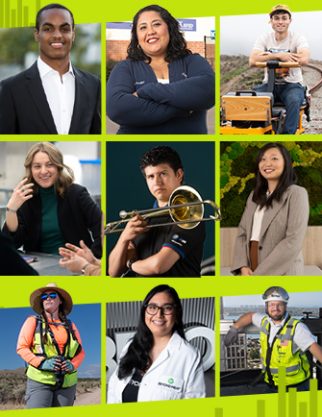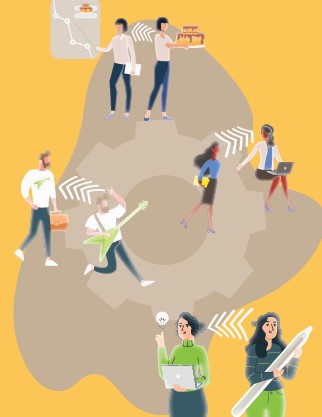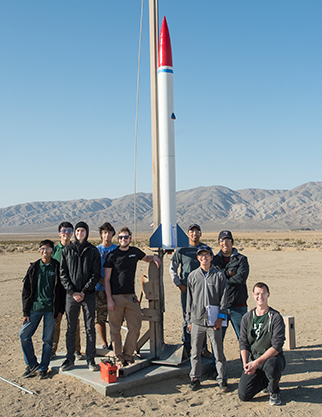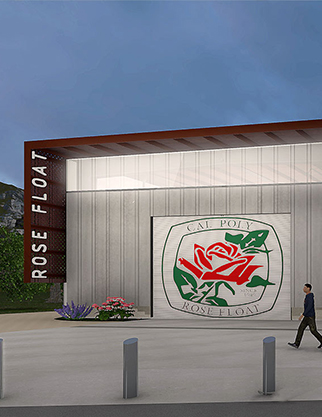A center of politics, entertainment and social issues, Los Angeles is no stranger to the contradictions of opportunity and exclusion.This was the backdrop of Jonathan Pacheco Bell’s zigzag journey from teen graffiti tagger and muralist to architecture school dropout to urban planner. He originated the Embedded Planning praxis, the idea that planners can better advance equity by actively participating in their cities’ daily lives to create policies that reflect “street realities.” A senior embedded planner at the 4Leaf, Inc., Pacheco Bell is an adjunct faculty member in the College of Environmental Design.
How did your upbringing inspire Embedded Planning?
I was born in Boyle Heights and raised in East LA and Montebello during the rise of West Coast hip hop culture, LA-based graffiti, and gangsta rap. I started tagging in the late 80s in junior high school. By the time I got to high school, I’d graduated to doing full-color street murals — art created on the ground. Out there, you always have a discerning eye looking out for cops, gangs, and vigilantes. Being a graffiti writer taught me how to move through public space. Graffiti culture is how I was exposed to cities and urbanism.
I would go on to study architecture at East Los Angeles College and political science at Cal State LA. When I finished my undergraduate studies, I wanted to “bring it all together” by studying the politics of city design at the graduate level. I started researching different fields and found urban planning. I chose UCLA Urban Planning to study under luminaries such as Edward W. Soja and Jackie Leavitt, who are no longer with us, but whose teachings about activist planning form part of the DNA of Embedded Planning praxis.
How does Embedded Planning fit in traditional city/urban/regional planning?
Like many other professions, planning deals with a theory/practice gap. What we’re taught in our urban planning classes frequently differs from what we do on the job. In the academy, planners learn about theories such as Advocacy Planning and Insurgent Planning that were born as challenges to technocratic Rational Planning. But in practice, radical approaches require the planner to be political, take a stand, and challenge power structures. That makes some planning traditionalists uncomfortable.
Planning, by convention, is a desk-bound profession, and planners work separately from the communities they serve. Embedded Planning challenges planners to perform their work at the street-level. I use the phrase “move with intention.” This means you do as much as possible to relocate your work from behind a desk to the spaces and places of the community. Go to the people. Be part of daily community life. Plan in plain language. Make the neighborhood your office. This is how you build trust with community members. Embedded Planning makes traditional city planning more accessible.
What are the results in communities where Embedded Planning is practiced?
Embedded Planning was born on the streets of Florence-Firestone in South Central LA. This community has long been burdened with the legacies of inequitable planning: redlining, environmental racism, disinvestment, and more. As a youth, I learned of these injustices from listening to hip hop legends NWA and Ice-T. Years later, I got the chance to do something about it as an LA County planner working in Florence-Firestone. I saw that, like so many marginalized communities of color, Florence-Firestone needed tailored, empathetic planning services. So I pushed my planning work to the street level. I demonstrated that I was authentic and trustworthy. In time, community members embraced me as an ally. By taking it to the streets, Embedded Planning got more people engaged, aware of planning, and participating in the planning process.
Embedded Planning has grown exponentially since 2018. The next generation does not want to plan from a desk. I see this in our Cal Poly Pomona students. Increasing injustice in cities has raised the stakes. I think this spirit is driving the spread of Embedded Planning beyond Los Angeles.
We’re seeing allied planners move with intention to work from the streets. Take what’s happening in Dallas, Texas. Do Right By The Streets Planning (DRBTS) and RAYO Planning work with intention from neighborhood spaces.
DRBTS partners with residents to co-design food festivals and pop-up markets. Their work is planned, designed and built in the community. “For Us, By Us,” as we say. RAYO’s work counters racism in the built environment. RAYO has been organizing on the ground with Latino-owned auto shops to ensure meaningful inclusion in community planning processes. Through their upcoming People-Powered Planning Academy, working-class residents of color will learn how to gain community control of land use processes. DRBTS and RAYO demonstrate that Embedded Planning can be done anywhere. It starts with planners putting their feet on the ground.











